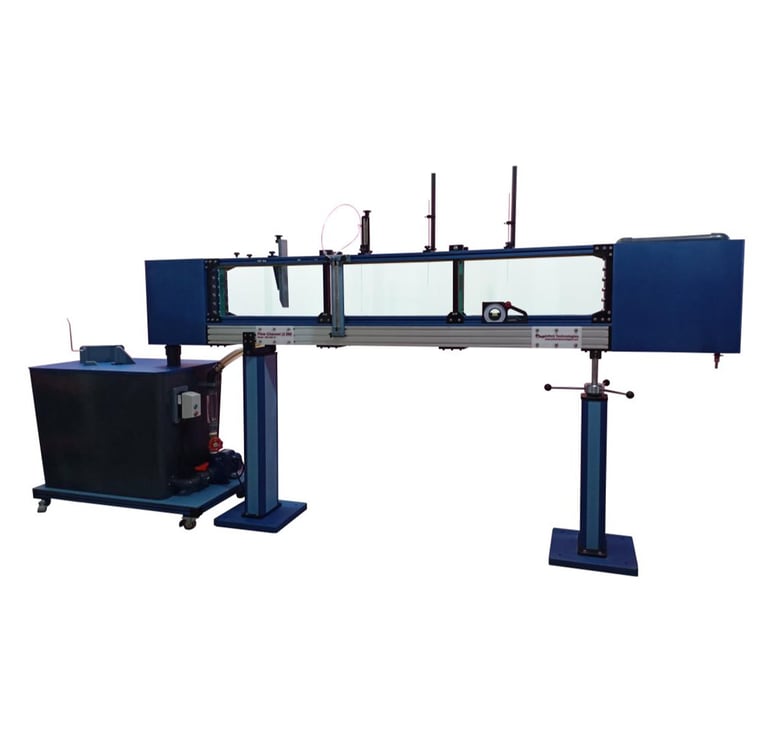

Open-Channel Sediment Transport
Experiments
Bed-load transport in open channels.
sub-critical and super-critical flow
formation of ripples, dunes and antidunes
How flow velocity affects bed-load transport.
Fluvial obstacle mark (siltation/scour formation)
bridge pier
sluice gate
Bed-load transport formulae
Meyer-Peter and Müller formula
Einstein’s formula
determining the transport rate
Visualization of the flow
Open-channel flow without sediment transport
sub-critical and super-critical flow
control structure: sluice gate
discharge measurement on the sharp-crested Weir
Specification
Investigation of open-channel flow with and without bed-load transport
Experimental flume, consisting of experimental section, inlet element, water outlet and closed water circuit
All surfaces in contact with water are made of corrosion-resistant materials
Flow-optimized inlet element for low-turbulence entry to the experimental section; inlet element with sediment trap to prevent sediment flowing
backClosed water circuit with water tank with sediment trap for coarse sand, pump and manual flow rate adjustment
Sluice gate and bridge pier for experiments with and without sediment transport
Smoothly adjustable inclination of the experimental section
Side walls of the experimental section are made of tempered glass for excellent observation of the experiments
Visualization of the flow using a contrast medium.
Discharge measurement via measuring weir in the water drain
Level gauge for measuring the discharge depth and the height of the sediment surface
Category: Fluid Mechanics Products
FM-1849-42 uses sand as an example to demonstrate important phenomena of bed-load transport in the area near the bottom. Open channel flow without sediment transport is also possible. Discharge can be sub-critical or super-critical.
The core element of the FM-1849-42 experimental flume with closed water circuit is the inclining experimental section. The side walls of the experimental section are made of tempered glass, which allows excellent observation of the experiments. All components that come into contact with water are made of corrosion-resistant materials (stainless steel, glass reinforced plastic). The inlet element is designed so that the flow enters the experimental section with very little turbulence and no sediment can flow back. The tank after the water outlet contains a sediment trap for coarse sand.
The inclination of the experimental flume can be finely adjusted to produce slope and to create a uniform flow at a constant discharge depth. In addition to bed-load transport in open channels, some models can also be used to observe fluvial obstacle marks, namely scour formation and siltation at structures. A rounded-nosed pier or a sluice gate can be inserted into the experimental section. The discharge is measured via a measuring weir in the water outlet and a level gauge. The level gauge is also used for profile measurement in the sediment and to determine the discharge depth at each point of the experimental section.
A contrast medium can be injected to visualize the flow conditions.
